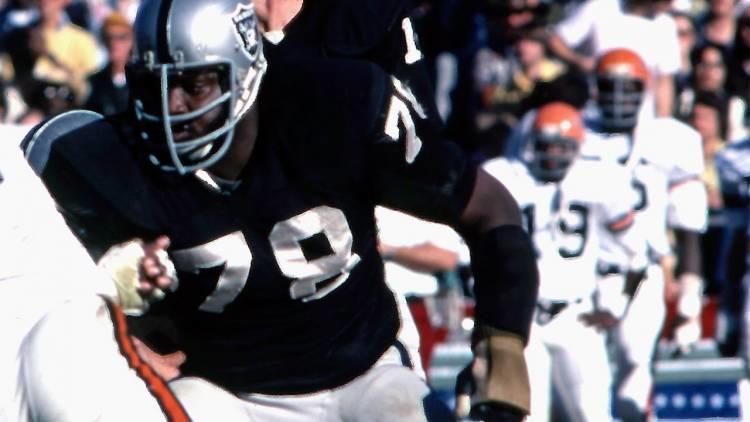
While Harry Carson is a Giants' legend and worthy of recognition, the title for South Carolina's greatest NFL player goes to Art Shell, not only for his Hall of Fame play, but for what he represents to the National Football League and society in general. Hailing from Charleston, South Carolina, offensive tackle, Art Shell, took his talents north to Maryland where he would play his collegiate footnall as a member of the Maryland State University Terrapins. While he was standout collegiately, Shell somehow slipped down to the third round of the 1968 NFL Draft being picked 80th overall by the Oakland Raiders.
Shell would go on to play his entire fifteen-season NFL career with the Oakland Raiders (1968-1972), earning two Super Bowl rings as the starting left tackle (Superbowl XI and XV), eight Pro Bowl invites, and two All-Pro First Team roster spots in 207 games and 168 starts with the Bay Area ball club. Not only was Shell inducted into the Football Hall of Fame for his performance on the field, Art Shell went on to become the second African-American head coach in the NFL and the first om the modern sports era. Shell was the first Black-American head coach to lead a team to a conference championship game (1990) and had overall head coaching record of 54-38 with two stints with the Oakland Raiders.
When we think of inventors, the image that comes to mind is usually that of a frazzled scientist toiling away in a lab, not celebrities pulled from the pages of Us Weekly. However, a number of well-known public figures hold patents for various innovations. Some are related to the work that made them famous, while others are offshoots of hobbies or just a single great idea.
Part of guitar wizard Eddie Van Halen's signature sound was his two-handed tapping technique, but letting all ten fingers fly while simultaneously holding up the guitar's neck could get a bit tricky. Van Halen came up with a novel way to get around this problem, though; he invented a support (top) that could flip out of the back of his axe's body to raise and stabilize the fretboard so he could tap out searing songs like "Eruption." While Van Halen was obviously interested in improving his guitar work, the patent application he filed in 1985 notes that the device would work with any stringed instrument. Want to tap out a scorching mandolin solo? Find someone selling Eddie's device.
It’s probably not surprising that James Cameron—who designed a submersible to take him to the deepest known part of the ocean—will often invent technology to make his films if what he needs doesn’t exist. He holds a number of patents, including US Patent No. 4996938, “apparatus for propelling a user in an underwater environment,” that he and his brother, Michael, created to film The Abyss and patented in 1989. The device is basically an underwater dolly equipped with propellers that makes it easy for a camera operator to maneuver in the water—and allowed Cameron to capture the shots he wanted for the 1989 film, part of which was filmed in an abandoned nuclear reactor.
In 1987 Jamie Lee Curtis designed and patented a disposable diaper that included a waterproof pocket that held baby wipes. She hasn't profited from her idea yet, though, since she refuses to license the patent until diaper companies make biodegradable products.
You know him as a rock legend, but Neil Young also loves trains—so much that he owns a stake in a model train manufacturing company and has an extensive collection. He also holds seven patents related to model trains, including Patent No. US5441223, "Model train controller using electromagnetic field between track and ground."